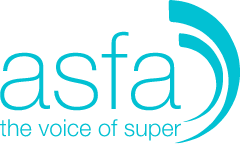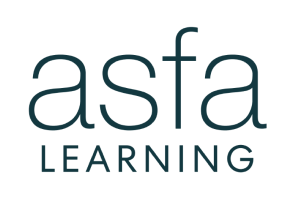13 November 2019
SPEECH: ASFA CEO, Dr Martin Fahy
2019 ASFA Conference, Melbourne
Check against delivery
The Superannuation Narrative
Robert Shiller in his recent book Narrative Economics suggests that popular stories change through time to affect economic outcomes. These stories – “spiralling inflation”, “tax and spend” and “plummeting house prices” – can through contagion have unwarranted and disproportionate influence on the public policy debate.
I would argue that superannuation is currently in the grip of a contagious false narrative which risks undermining the retirement outcomes of Australians.
Our retirement funding system is well advanced when compared with other global systems, as our transition to a compulsory defined contribution began earlier. We are not constrained by the long tail of defined benefit liabilities or public expectations of overly generous state pensions.
The fundamental bedrock of our system is that it has been built upon the principle of individual self-sufficiency – Australian’s providing for their own retirement, supported by appropriate retirement income policy.
Central to the defined contribution system design is compulsion, universality and adequacy of contributions. These in turn underpin its sustainability, with the projected fiscal cost of delivering the retirement outcomes Australians’ aspire to remaining relatively low and steady over time.
The Australian system is held in high esteem by global pension industry leaders. They universally regard us as a benchmark and an excellent example to follow as they look to progress their own.
The OECD recently published its Pensions Markets in Focus 2019 report. It is a data rich publication of around 100 pages so may not go to the top of the best seller list of books, but I found it a compelling read.
Figure 1: Average annual investment rates of return of pension plans over the last 5, 10 and 15 years (in per cent)
International comparisons are not without their challenges, but the most recent data is much more flattering to Australia than some of the OECD data that has been published in the past.
Australia has, according to the most recent OECD, about the best investment returns and lowest costs charged to fund members in the world.
Yet how can it be that locally, our system has so many detractors, despite all evidence to the contrary? Others want to emulate us, yet we find ourselves in a deep malaise that is proving difficult to shake.
Thirty years on from its modest beginnings our superannuation system has become the target of a misleading and dangerous narrative that seeks to present anecdote as data, internationally recognised success as a threat to the existing capital markets order and compulsion as a dangerous ideological plot to undermine western liberal democracy.
This combative narrative labels our system, unaffordable, failing lower income earners, inefficient, lacking transparency, and that it eats wage growth. At the most ludicrous level it suggests that in the worst-case retirement scenario you can eat your house, rely on a rental supplement, and that your grandparent’s retirement was good enough for them and its good enough for you. In summary we can’t afford your aspirations.
Surely a country endowed with an abundance of natural resources, 28 years of uninterrupted economic growth and a generous age pension that costs 2.6% of GDP can justifiably have aspirations beyond our grandparent’s retirement for its population.
The recently announced Review of the Retirement Income System presents an opportunity to move beyond this rhetorical hyperbole and dysfunctional narrative economics of retirement funding. If the review is to fully deliver on its aspiration to establish a single source of truth, then it should place into the public domain the all-important MODEL OF AUSTRALIAN RETIREMENT INCOMES AND ASSET (MARIA).
An open and transparent publication of the dynamic micro simulation model at the heart of the review would finally lay to rest the falsehoods that plague the superannuation debate in Australia. It would provide a platform for an informed evidence-based debate on the important issues of adequacy, benefit design and the impact of assumptions regarding CPI, wage growth, and capital market returns.
Publication of the MARIA code would allow us to move beyond the fractious debate on adequacy and contribution rates and focus on the next chapter of our unfinished superannuation story. That chapter will see large pools of Patient Responsible Pension Capital that have the potential to address many of the pressing issues of our country.
- The challenge of creating liveable cities in the face of growing urbanization. Superannuation has the potential to address the vexed issue of how we develop the necessary infrastructure, and specifically what role private capital should play in the development of transport, energy, real estate, and health and education infrastructure. Around the world States and commonwealths will consider the role that private capital plays in creating social spaces, and as large pools of capital compete to be deployed into these in low yield environments, there’s an opportunity for governments to embark on the infrastructure projects needed for liveable cities.
- Recalibrating the way effort is organized and rewarded in the economy: how the factors of production (traditionally capital, labour and land) come together to produce in/tangible, in/visible goods. This will be impacted by automation and the mass personalization happening across manufacturing, pharmaceuticals, food, tourism and other industries. We might print food, our next house and our own personalized medicine. What does that mean for the future of jobs and how we organize labour and share of income. And this in turn goes to the heart of “what we value and what we reward”.
- The issue of long-term sustainable growth, requires us to reconcile value and values if we are to solve the carbon puzzle.
- Finally the extent of the financialization of the economy. Where do we get our license to operate? Just as natural resources industries like hydrocarbons and extractive industries must have a license to operate, the ongoing financialization of the economy will also have to meet the social utility test. This has implications for the utility of our financial service industry and the products it provides
Conclusion
As the pools of patient responsible superannuation capital grow our system is well placed to take advantage of the opportunities that arise from the creative destructive process at play.
In order to do this however we need stakeholders across the system to recognise that risk is inherent to the promise of a defined contribution system.
A modernised prudential framework has contributed to a strong and sound system, devoid of systemic failure, and this should remain the core focus for prudential regulators.
We cannot, however, regulate our way to better outcomes through an overly zealous focus on short-term investment performance. This is more likely to detract from, than enhance, net performance within the system.
The concerted effort of superannuation funds to maximise risk-adjusted returns is not an objective science. Yet through a combination process, skill and judgement the system has delivered great outcomes for members over the long-term.
Investment in private capital markets, and internationalisation of our asset allocation are key to finding the investment opportunities that we need to diversify risk and generate returns to members.
Finally, and perhaps most importantly as we face into the retirement incomes review, the system must be developed in an open and transparent manner.
The modelling underpinning the review findings should be publicly released and stand up to rigorous scrutiny, in the cold light of day.
Without this, the contagious false narrative will continue to permeate debate and hold us all back.
Along the way we will encounter headwinds and setbacks but we must stay the course with our aspirations and stare down those that would dismantle our superannuation system with outdated thinking.
We must seek to attract high grade talent to the industry. It is the ingenuity of the people in this room today that will determine the future of retirement in this country. Australians deserve the very best professional management of funds and the system at large.
For further information, please contact:
Jacqui Maddock, 0451 949 300.
About ASFA
ASFA is the peak policy, research and advocacy body for Australia’s superannuation industry. It is a not-for-profit, sector-neutral, and non-party political, national organisation. ASFA’s mission is to continuously improve the superannuation system, so all Australians can enjoy a comfortable and dignified retirement.




